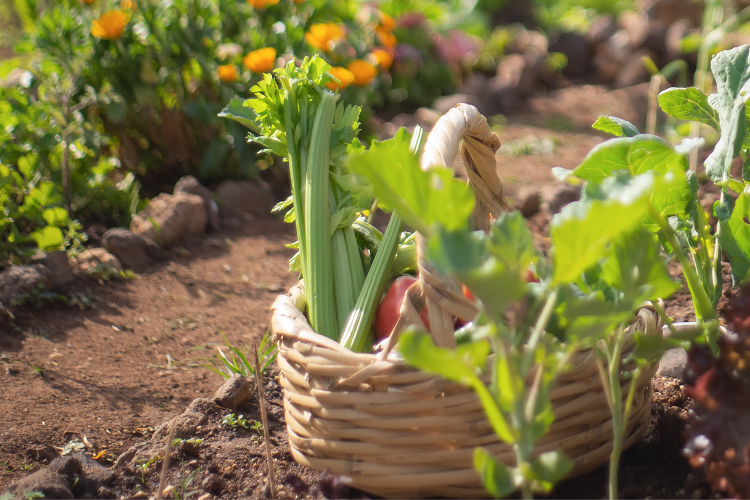Hungry? Grow, graze, or go to get groceries without worrying about hazardous exposures.

The first bite – or crunch – of fresh, in-season produce is almost always one of delight. But when hazardous materials enter our soils where we grow our food, or the waterways we rely on to water our yards, they can then reach the food you eat. That could pose a threat to you and your loved ones’ health.
Fill up on tips below to help you grow, graze, and go (to the grocery store) all while reducing your exposure to hazardous materials.
Growing (your own food)
The ultimate farm-to-table experience is one you’ve created yourself. For the amateur gardeners who love to put in some work to grow their own fruits and veggies, some natural yard care and garden hacks can go a long way in protecting yourself from hazardous materials.
Befriend the bugs
- Remove pests by hand or with traps instead of relying on pesticides. Handpicking and trapping pests can be very effective, especially against larger bugs and pests. Use sticky paper traps to manage flying pests, while beer traps can help prevent slugs.
- You can also introduce beneficial critters like lady bugs into your garden.
Dig deep and dig dirty
- Pull weeds by hand as much as you possibly can.
- To give your soil a safer boost this spring, mix 1-3 inches of compost into the soil when making new garden beds or planting a lawn.
Keep learning
- Our Program partners at the Garden Hotline offer workshops on a range of topics, from vegetable and container gardening to caring for herbs and houseplants naturally. All workshops are meant to teach you practices that will reduce your need for toxic chemicals and exposure, so check one out to grow your skills before you grow your garden!
Grill outdoors – and dispose of your waste safely
- BBQ prep and cleanup can produce various kinds of waste. Know what to do with each kind – especially the potentially hazardous materials that grilling can lead to.
Know the content of your cookware
- Some aluminum cookware manufactured overseas has been known to have high lead levels. Washington recently became the first state to ban cookware with lead levels higher than five parts per million. When possible, be sure you know the content of what you are cooking with. We recommend stainless steel cookware as the safest alternative.
Going (to get your groceries)
Get your groceries and help strengthen local food systems. It’s a winning (and healthy) way to reduce your exposure to toxic chemicals in the food you eat and support thriving agriculture in our region.
Shop local, shop fresh
- Find ingredients for your next meal from local farms in our region with the help of the King County Local Food Finder Map, a tool that helps you cross off your grocery list and support farmers in King County.
Visit a farmers' market
- Mostly seasonal events with some year-round markets offered around the region, King County’s 40 farmers markets are a great way to buy fresh produce grown nearby. They’re also a way for you to meet local farmers themselves and understand more about their different approaches to using products like pesticides and herbicides in their garden.
Whether you’re growing, grazing, or going to get groceries in your local community, there are multiple ways that hazardous waste may come into contact with your food. Fortunately, there are also many ways to reduce that exposure, protecting your health at the same time.
With these tips, keep in mind: The tastiest meal of all is one that’s free of hazardous waste.

 Translate
Translate